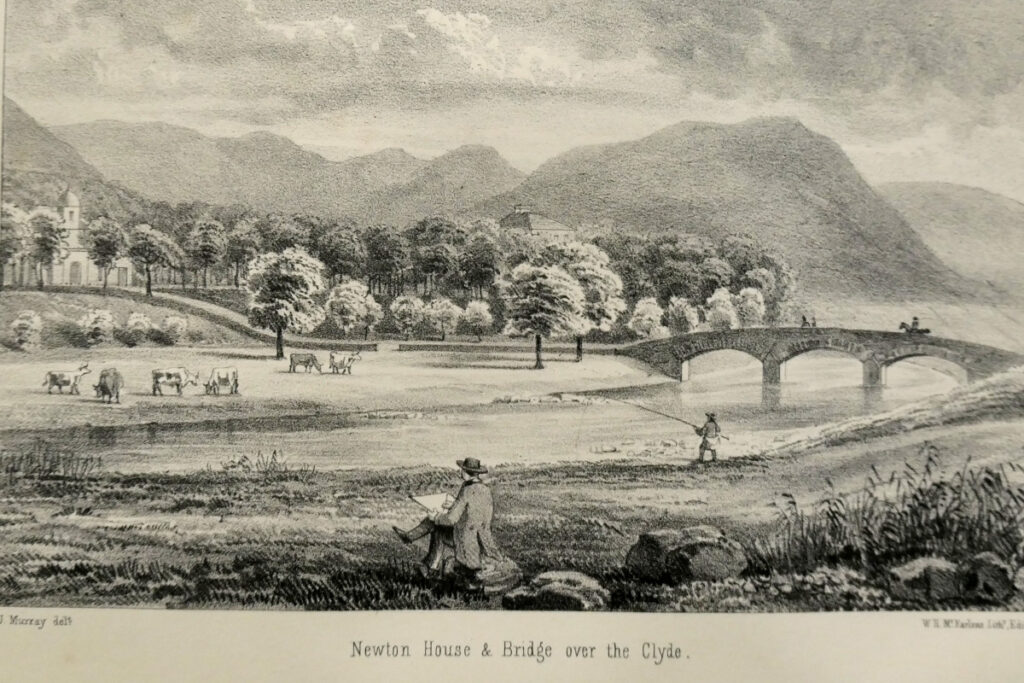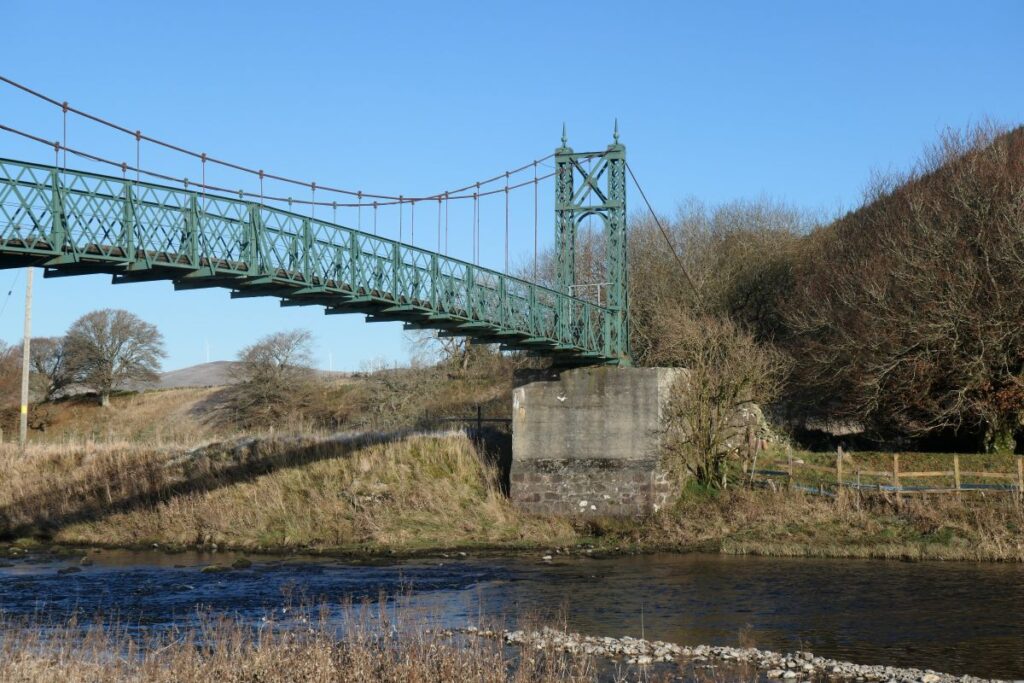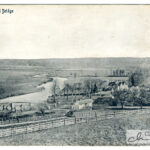…. a future hanging by a thread?
Neglected and seemingly forgotten, the old suspension bridge across Clyde at Elvanfoot continues to slowly decay. The elegant steel and iron footbridge is “B listed” in recognition of its special architectural and historical interest. The Council served a closure order in October 2007 on grounds of public safety after serious corrosion was identified. Now included in the Buildings at Risk Register and having survived one attempt to have it demolished, its future seems very uncertain.
The footbridge was constructed on the remains of the “old bridge” at Elvanfoot that once formed part of the great road providing the main link between Glasgow and Carlisle. The old bridge was probably built around 1769 in association with the creation of the turnpike road (although some suggest an earlier date). The bridge had three stone arches, the widest spanning 41 feet, while the carriageway was a modest 12 ft 4 inches wide.
In about 1812, plans were drawn up for the new Clydesdale Road – described as “one of the finest in the island”. These works included the construction of several new stretches of highway between Glasgow and Elvanfoot, and a number of major bridges. Amongst these was a fine new bridge at Elvanfoot, about 500 yards downstream of the original, which opened in 1825. This was designed by Thomas Telford and crossed the Clyde in a single 90 foot span. The old bridge was described at that time as “badly situated, and in danger of being destroyed by a change in the river currently immediately above it”, but remained in use for local traffic. Mail coaches were sometimes diverted across the old bridge, when the cutting leading to the Telford bridge became blocked with snow.


Engraving of the Old Bridge, from Irving & Murray, 1864. Section of Thomson’s map of Lanarkshire, 1822; the dotted line (highlighted here in yellow) marks the proposed route of the new Clydesdale road, and the location of Telford’s New Bridge across the Clyde.
Despite concerns that the old bridge might be washed away, it survived for a further century and it was not until the Autumn of 1926 that the old structure finally succumbed to the wild waters of the Clyde. The crossing still provided a vital link between Elvanfoot and the Newton estate, where many would have earned their living. Lanarkshire County Council therefore constructed a new footbridge spanning the Clyde between the abutments of the old bridge which were rather clumsily reinforced with poured concrete. The suspension bridge, built at a cost of £1,240, was opened in 1929. The iron and steel bridge seems to have been supplied by David Rowell & Co of London who specialised in small suspension footbridges. A number of their products still serve useful purposes in the UK and overseas. There are apparently still examples of Rowell bridges (all with a strong family resemblance to the Elvanfoot bridge), in New Zealand, Guatemala, Chile, and the Falkland Islands.


Press cutting from the Daily Herald, and examples of surviving Rowell suspension bridges elsewhere in the UK
In 1991, the Elvanfoot bridge was awarded B-listed status, and in 1994 Strathclyde Regional Council undertook repairs that required the temporary closure of the footbridge for two months. When the bridge was inspected by South Lanarkshire Council in 2007, serious corrosion of the suspension cables and hangars was discovered. The bridge was closed on grounds of public safety, and a study subsequently estimated the cost of repair as £470,000.
South Lanarkshire Council applied for consent to demolish the footbridge in 2012. Their Statement of Justification for demolition stated “The bridge was constructed in 1926 to replace a masonry arch structure damaged by high floods”….. “it is understood that the construction of the bridge was jointly funded by the owners of Newton House and public subscription”. “SLC does not own any part of the bridge”. “Legal Services have identified the potential owner of the west half of the bridge., however, despite four years of legal efforts, the eastern half is proving to be more problematic.”
The construction date quoted isn’t quite right, (although a lot more accurate than the information given by HES on the Canmore website), and a search of historic newspapers has found no reference to public subscription or any indication that anyone other than the Council funded construction of the bridge. When seeking consent to demolish, the Council planned to carry out the work and recharge the owners, however various parties contended that the Council remained owners of the structure and were still responsible for its care. The application to demolish was then withdrawn.
A study was then commissioned, involving the local community, to assess options for preservation of the bridge. Unfortunately it’s unclear what further progress has been achieved over the last decade to help secure the future of the elegant old structure, set within such a beautiful and historically significant landscape.





Unless otherwise stated, all text, images, and other media content are protected under copyright. If you wish to share any content featured on Clydesdale's Heritage, please get in touch to request permission.




